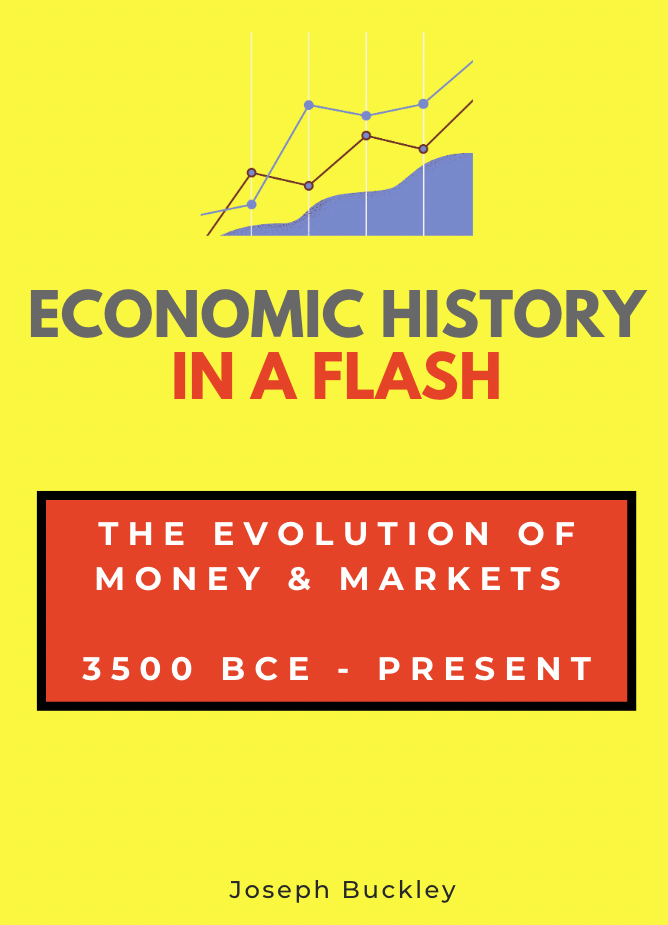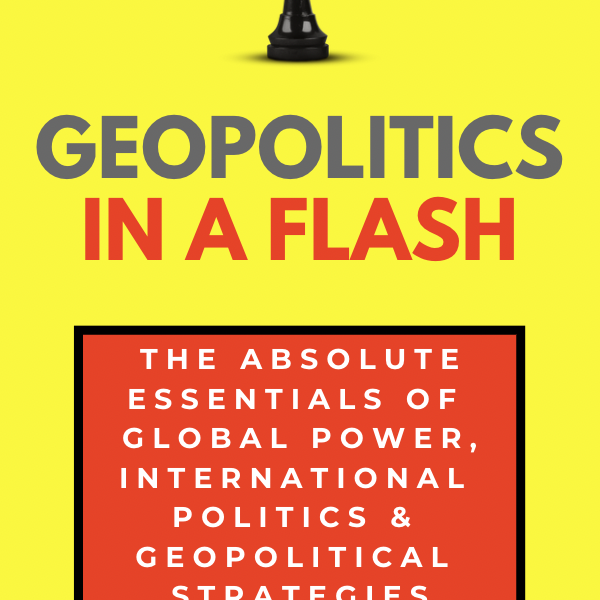Joseph Buckley’s “Economic History in a Flash – The Evolution of Money & Markets: 3500 BCE – Present” is an exploration of humanity’s economic journey.
Spanning nearly 6,000 years, this book provides an all-around view of how money, markets, and trade have evolved from the earliest civilizations to our modern, interconnected world.
Table of Contents
Comprehensive and Engaging
Buckley masterfully combines scholarly research with engaging storytelling, making complex economic concepts accessible to a broad audience.
The book is meticulously structured, covering significant eras and civilizations, including ancient Mesopotamia, Egypt, the Indus Valley, classical Greece and Rome, medieval Europe, the Islamic Golden Age, the Renaissance, and the Industrial Revolution, right up to the digital age and beyond.
Highlights and Key Insights
1. Origins of Trade and Currency
The book begins with the dawn of trade and the emergence of early barter systems in ancient Mesopotamia. Buckley looks into the economic structures of early civilizations, highlighting the transition from barter to commodity money, such as barley, salt, and silver. This foundational chapter sets the stage for understanding the complexities of economic interactions throughout history.
2. Classical Economies
The exploration of ancient Greece and Rome provides insights into the development of markets and philosophical influences on economic thought. Buckley details the establishment of early marketplaces, the use of currency systems, and the economic policies that shaped these classical civilizations. The impact of Roman law and governance on economic practices is particularly enlightening.
3. Medieval and Renaissance Transformations
The medieval period’s economic structures, including feudalism and the rise of trade guilds, are examined in depth. Buckley also covers the economic innovations of the Islamic Golden Age and the revival of trade and banking during the Renaissance. These chapters emphasize the interconnectedness of cultures and the flow of ideas that propelled economic progress.
4. Modern Economic Developments
The book provides a thorough analysis of the Industrial Revolution, the rise of capitalism, and the significant economic transformations of the 19th and 20th centuries. Buckley explains how technological innovations, global trade networks, and economic theories have shaped modern economies. The discussion on the economic impact of world wars, the Great Depression, and globalization is both comprehensive and thought-provoking.
5. Future Trends
Looking ahead, Buckley explores the digital economy, cryptocurrencies, and the role of artificial intelligence and machine learning in shaping future economic landscapes. The book concludes with an optimistic view of the pursuit of sustainable and inclusive economic models, reflecting contemporary concerns and aspirations.
Scholarly Yet Accessible
One of the book’s strengths is its ability to present detailed historical and economic analysis in a readable and engaging manner. Buckley’s writing is clear and concise, making complex topics accessible without oversimplifying them. The use of real-world examples adds depth and relevance to the narrative, helping readers connect historical events with current economic practices.
A Valuable Resource
“Economic History in a Flash” is not just a historical account; it’s a valuable resource for anyone interested in understanding the forces that have shaped our world. Whether you’re a student, a historian, an economist, or simply a curious reader, this book offers a wealth of knowledge and insights. Buckley’s comprehensive coverage and engaging style make it a must-read for anyone seeking to understand the evolution of money and markets.
Conclusion
Joseph Buckley’s “Economic History in a Flash – The Evolution of Money & Markets: 3500 BCE – Present” is a great read for those interested in economics and its history.
It does lack some depth, so I have to deduct there, but then again that’s kind of the point of the “In a Flash” part of the title.
True economics and history buffs may like a 500-1,000 page tome on this subject – or possibly individual books on each of the subtopics – but this gets it done in under 200 pages.
It provides a thorough, engaging, and insightful journey through the economic history of humanity.
Highly recommended for anyone looking to deepen their understanding of our economic past and future.
Overall, a captivating journey through thousands of years of economic history. A must-read for economics and history enthusiasts
Rating: 4.9/5 Stars


